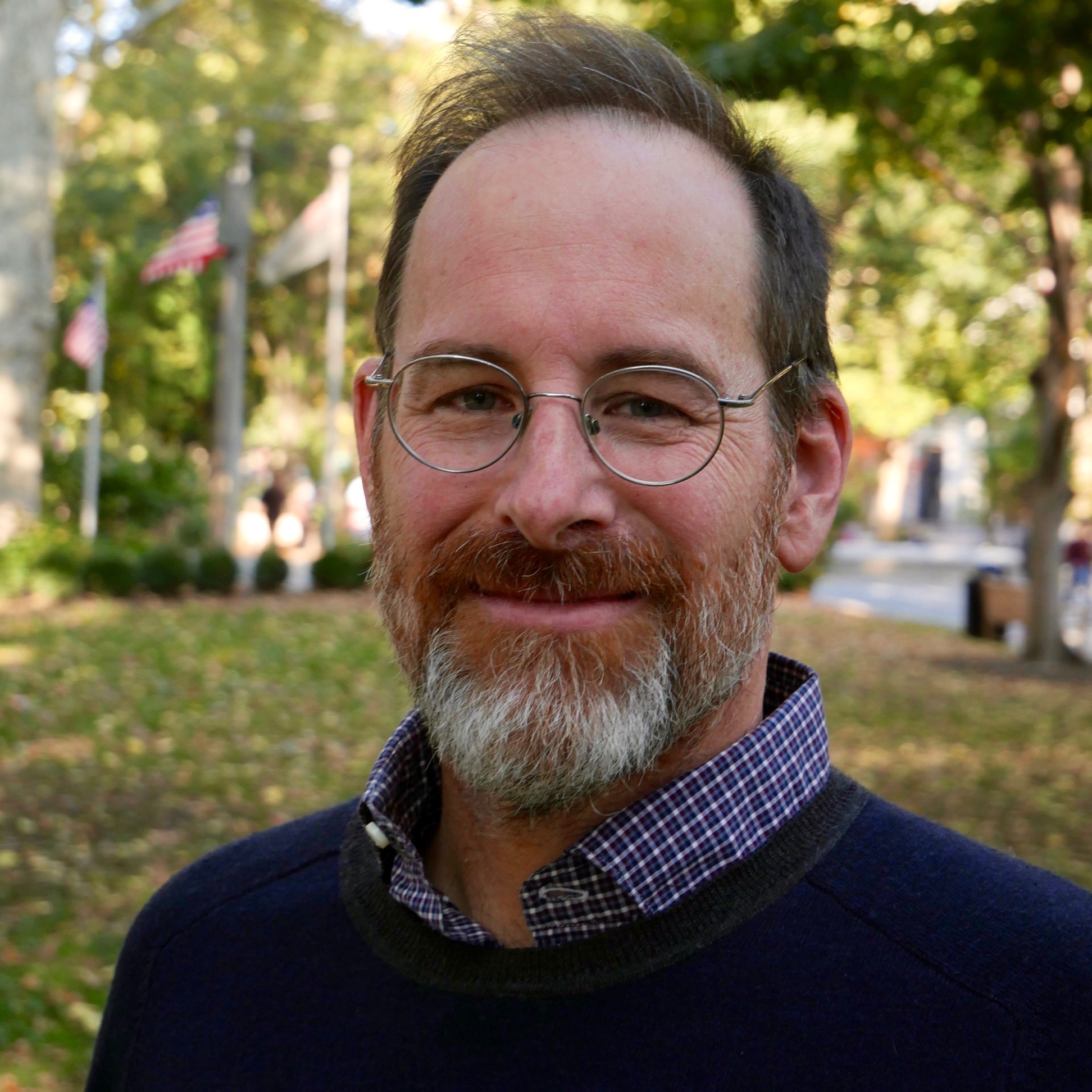Edward G. Gray (1964–2023)
Cultural Historian of Early America and the United States; AHA Member

Photo courtesy Stacey Rutledge
Edward G. Gray was a prolific and rigorous scholar with the deep humanistic insight of a true menschenkenner. Trained at the University of Chicago (BA, 1988) and Brown University (PhD, 1996), he became a historian because people and their foibles fascinated him. Coming of age at the peak of the linguistic turn, he started his career working on the relationship between language, culture, and politics. His elegant first monograph, New World Babel: Languages and Nations in Early America (Princeton Univ. Press, 1999), explored characters as diverse as John Eliot, Thomas Jefferson, and the Mingo orator Soyechtowa, known as James Logan. Subsequent projects—four solo-authored books published during his too-brief life and two in progress at his untimely death on December 22, 2023, from a catastrophic heart attack—continued to focus on people caught between worlds at moments of seismic change.
Trained in the history of ideas tradition by Norman Fiering and Gordon S. Wood, Ed was a meticulous student of systematic thought. But he also became, in his mature work, a shoe-leather scholar and even an archive hound. He read seemingly everything, from Bailyn to Benjamin to Borges. Dedicated to understanding the way ideas traveled through material worlds, he walked the paths of his protagonists, following a Connecticut-born minister and traveler to Russia for The Making of John Ledyard: Empire and Ambition in the Life of an Early American Traveler (Yale Univ. Press, 2007); hunting iron trestle bridges in the north of England to understand the internal improvement career of Tom Paine; and ambling across the Susquehanna Valley in search of the crumbling markers of the Mason-Dixon Line, a border as faint in fact as it is vivid in our national imagination. Published shortly before his death, Gray’s Mason-Dixon: Crucible of the Nation (Harvard Univ. Press) is magisterial: the summit of a lifetime of learning and loving America’s tangled history, and of nurturing our precarious democracy.
An originary scholar in a solitary discipline, Ed was also a peerless collaborator: modest, disciplined, clear eyed, and unfailingly honest. When Jill Lepore and I started the online journal Common-place in 1999, Ed was one of the first who signed on to the editorial collective, so distinguishing himself among that body that he succeeded us as editor. He brought me on as co-editor of the Oxford Handbook of the American Revolution (2012), a massive undertaking that Ed turned into a genuine delight. Last fall, during a weekend with our spouses in New Orleans, one of Ed’s favorite places in a well-traveled life, we spied a copy of the Handbook in the wild and signed it for the used bookstore owner with mock-ceremony worthy of a major legislative accomplishment. Ed knew how to take joy and take the piss at the same time.
Among the other collaborations Ed shaped and delighted in was the University of Chicago Press book series American Beginnings, which he co-founded with Mark Peterson and Stephen Mihm. In private moments, they called it “No-Bullshit Books in American History,” a list that published a string of plainspoken prizewinners, nearly as allergic to fashionable cant as Ed was himself. He was also part of a long-running, mostly online meetup with Peterson, Trevor Burnard, Eliga Gould, Eric Hinderaker, and Peter Mancall—at once a Zoom pub and an intellectual brotherhood.
Ed believed passionately in public universities as engines of economic mobility and democratic renewal. He joined the faculty of Florida State University in 1998, rising from assistant to full professor. Though he had little interest in leadership and none in grandiosity, he was blessed, or cursed, with keen institutional vision. He served for nine years, including through the pandemic, as history department chair, making a dozen transformative appointments that steered his colleagues across a generational chasm and shepherding eight candidates successfully through promotion. Shortly before his death, the university nominated him for a Distinguished Research Professorship.
Ed was wise, tender, and oh so funny. I can’t count the number of times he made me laugh till I gasped for air, or worse. He loved his family profoundly and admired them deeply for who they are, not what they’ve done. He leaves behind his brilliant and beloved wife and fellow FSU faculty member, Stacey Rutledge, and their children, Sophie and Tobias, just now emerging into independent adulthood in ways that justify his boundless pride in them. Weightier than Edward G. Gray’s considerable body of important work is the generous imprint he leaves on our wounded hearts.
Jane Kamensky
Monticello
Tags: In Memoriam North America Cultural History

This work is licensed under a Creative Commons Attribution-NonCommercial-NoDerivatives 4.0 International License. Attribution must provide author name, article title, Perspectives on History, date of publication, and a link to this page. This license applies only to the article, not to text or images used here by permission.
The American Historical Association welcomes comments in the discussion area below, at AHA Communities, and in letters to the editor. Please read our commenting and letters policy before submitting.
Comment
Please read our commenting and letters policy before submitting.






